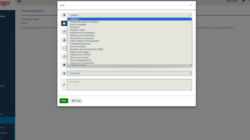Delving into google app email, this introduction immerses readers in a unique and compelling narrative that showcases the transformative power of technology in our daily communication.
The Google app email service, integrated with the capabilities of Google Workspace, offers a seamless platform for managing emails, calendars, and collaborative tools that enhance productivity. From individual users to large organizations, its user-friendly interface and robust features make it an essential tool for effective communication and organization in today’s fast-paced digital world.
Over the past few years, the landscape of work has undergone a significant transformation, with remote work emerging as a dominant trend. This shift, accelerated by the global pandemic, has led companies and employees to reassess traditional notions of workplace dynamics. In this article, we delve into the factors contributing to the rise of remote work, its advantages and challenges, and what the future may hold for this evolving employment model.
The Catalyst: COVID-19 Pandemic
While remote work was already gaining traction prior to 2020, the COVID-19 pandemic served as a powerful catalyst for widespread adoption. As businesses scrambled to maintain operations amidst lockdowns, many were forced to implement remote work policies almost overnight. This sudden transition highlighted the potential for flexibility in job roles that were previously considered office-bound. Organizations quickly discovered that employees could remain productive while working from home, leading to a reevaluation of the necessity of physical office spaces.
Technological Advancements
One of the primary enablers of remote work is the rapid advancement of technology. Tools like Zoom, Slack, and Asana have transformed the way teams communicate and collaborate. High-speed internet has become more accessible, allowing for seamless video conferencing and cloud-based project management. These technologies not only facilitate remote work but also enhance the overall efficiency of teams by allowing for real-time collaboration, regardless of geographical barriers.
Advantages of Remote Work
The benefits of remote work are manifold, appealing to both employees and employers. For employees, the most significant advantage is the flexibility it offers. Remote work allows individuals to tailor their work environments and hours to suit their personal lifestyles. This flexibility can lead to improved work-life balance, reducing stress and increasing overall job satisfaction.
From an employer’s perspective, remote work can lead to cost savings. Companies can reduce overhead expenses by downsizing office space and minimizing utility costs. Moreover, a broader talent pool becomes accessible when geographical limitations are removed, enabling organizations to hire the best talent regardless of location. This can enhance diversity within teams, promoting a more inclusive workplace.
Challenges of Remote Work
Another significant challenge is the potential for isolation. While remote work can offer flexibility, it can also lead to feelings of loneliness among employees who miss the social interactions that an office setting provides. Organizations are increasingly recognizing the importance of nurturing a positive company culture and finding innovative ways to connect employees, such as virtual team-building activities and regular check-ins.
The Future of Remote Work
As we look ahead, it is clear that remote work is here to stay. Many organizations are adopting a hybrid model that combines the benefits of both in-person and remote work. This approach allows employees to enjoy the flexibility of working from home while still having access to the collaborative environment of an office.
Furthermore, as more companies embrace remote work, we can expect to see changes in employment policies and labor laws to accommodate this new way of working. Issues such as remote work stipends, tax implications, and employee rights will need to be addressed as the workforce evolves.
Conclusion
The rise of remote work signifies a fundamental shift in how we approach employment. While challenges remain, the potential benefits for both employees and employers are substantial. As technology continues to advance and organizations adapt to this new model, remote work will likely become an integral part of the future employment landscape. It’s an exciting time for workers and companies alike as we navigate this new era of work.
General Inquiries
What is google app email?
Google app email is a part of Google Workspace that provides professional email services along with other productivity tools.
Can I use google app email on mobile devices?
Yes, google app email can be accessed on mobile devices through the Gmail app or any web browser.
Is google app email secure?
Yes, google app email includes robust security features like two-step verification and encryption to protect user data.
Can I integrate other apps with google app email?
Yes, google app email integrates seamlessly with various third-party applications to enhance productivity.
What storage options are available with google app email?
Google app email offers different storage options based on the Google Workspace plan you choose, ranging from 30GB to unlimited storage.












